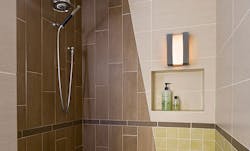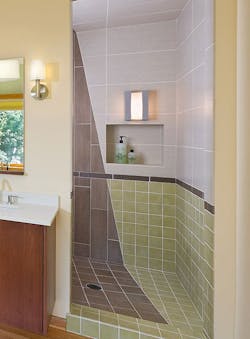Keep them dry, slope the flat parts, and let the dimensions follow the grout lines
We asked some of our design-oriented technical team members for some tips on niches.
Mike Maines, a designer, master carpenter, and remodeler and Michael Anschel, owner of Otogawa-Anschel Design+Build let us know what they really think about niche design, construction, and material selection.
Spoiler alert: the advice changes if they are doing the work in their own bathroom rather than specifying the work for a subcontractor or customer.
About the Author
Sign up for our eNewsletters
Get the latest news and updates

